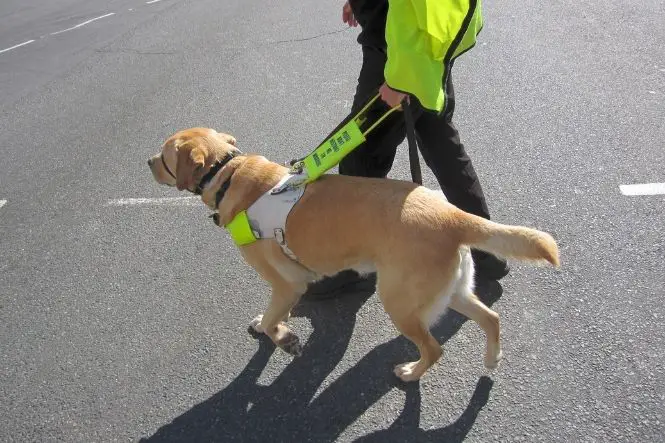Many people with assistance dogs make relatively frequent use of taxis and mini cabs.
The main difference between a taxi and a mini cab is that a taxi will normally have an illuminated taxi sign on its roof and a pale on the rear of the vehicle displaying the driver’s taxi licence number. Taxis are also able to be hailed on the street and can be picked up at a taxi rank in addition to being able to be pre-booked by a customer. Mini cabs can only be used if they have been booked in advance by the passenger.
Drivers of both taxis and mini cabs have a duty to carry assistance dogs, free of charge, in their vehicles. Mini cab drivers can not legally refuse you a booking just because you are accompanied by an assistance dog.
It is important that your assistance dog wears its harness, as drivers have been told how to identify such animals. It is also important to ensure that your assistance dog does not cause any damage to the vehicle in which it is travelling, so it is probably best to ensure that your dog stays on the floor of the vehicle. If there is any damage to the vehicle, the driver may request that you pay for it.
Should you experience any problems, such as a driver refusing to carry your assistance dog, you should make a complaint to the local licensing authority or the Public Carriage office in London.
Exempt Taxi Drivers
However, some drivers are exempt from a legal responsibility to carry assistance dogs in their vehicles. These drivers must prove to the licensing authority that they have a medical condition, for example severe asthma which can be activated by dogs. Such drivers will have been issued with an exemption certificate and will have been issued with a notice which must be clearly displayed. This notice is yellow and has the letters ED(which stand for Exemption Dogs) written on it along with the driver’s license number. It should be on display in the vehicle’s window.
When taking your assistance dog on international flights to other European Union countries it is worth considering the Pet Travel Scheme(PETS). This will help you avoid long periods of quarantine when you return to the UK. However, not all airlines operate the scheme,so check beforehand. Unlike other dogs that fly with PETS, assistance dogs are allowed to travel in the passenger cabin with their owner.
Air Travel
To prepare your dog under the Pet Travel Scheme the dog must be, microchipped, vaccinated against rabies and have a blood test.
In addition your dog must be issued with a pet passport and have treatment for ticks and worms. The order this is needed to be carried out in can vary from country to country, so always check prior to preparing your dog for the flight. As dogs infected with rabies can take 6 months to show physical symptoms of the disease, your dog may not enter or re-enter the UK under PETS until 6 calendar months have passed since a blood sample was taken. It is important that you ensure that the microchip can be read before and after it has been fitted to your dog.
If you are travelling by train with your assistance dog, the dog will normally travel free but it is worth checking with the train company that you plan to use just to confirm this.

